[Editor’s note: Following up on the analysis, in my last post, of the timing of Robert Capa’s arrival at and departure from Omaha Beach on the morning of D-Day, June 6, 1944, photojournalist and author J. Ross Baughman brings his expertise as a combat photographer to bear on a frame-by-frame analysis of the 10 remaining images Capa made there. Part 1 appears below; Part 2 will follow. — A. D. Coleman]
•
Battlefield Conditions on D-Day
during Robert Capa’s Coverage 6 June 1944
•
What details about the Easy Red sector of the beach can be confirmed directly from Robert Capa’s photographs? The notes below take them in sequence, referring to them by their order on the contact sheet (CS) and the negative number visible on the film. An annotated version of the contact sheet appears at the end of this post.
CS frame 1/neg. 29:
During the first moment that Capa can catch, he stands atop the loading ramp of his LCVP Higgins boat looking slightly downward as 12 American troops dash for the beach, each carrying between 40-75 pounds of gear. Because of the draft of their boat, they cannot be delivered directly onto the sand. In addition to their backpacks and rifles, several are either strapped with or hand-carrying cases of special equipment required for the landing. One man in the upper right appears to be dragging a small flotation raft intended for carrying more delicate electronic devices packed in oilskin bags.
The troops must wade through surf for the first several steps, and it comes up to their mid-thighs. The final soldier to depart the boat is now about 7 seconds distant from Capa, while the first to make the exit is probably 30 seconds ahead of him.
The dim silhouettes of other American forces are barely visible in the distance. A smoky gray mist hangs in the air, a combination of fires set on the beach by the Allied bombardment in the previous hour along with patchy fog and the overcast weather that follows several days of heavy rain. Good visibility is limited to about 40 yards; and just as this prevents a clear view for Capa across the 300 yard expanse of beach, it also limits the line of fire for German troops even though they hold the upper ground on a bluff.
Only one line of iron hedgehog obstacles can be seen in the middle ground ahead. It is the last line of the several rows that Germans planted to rip the bottom of Allied ships.
There are no visible bullet strikes across the water in this wide landscape composition.
Close to the center of the frame is one dark object sitting lower in the surf that is difficult to identify. It might be an immediate casualty, cut down by enemy fire from this same unit of men; or possibly someone from an earlier unit that had been wounded before. It might have been someone who lost his footing and simply tripped, or it might only be a large backpack that was abandoned.
Analysis so far: On this one small sector of the Easy Red beachhead, the American landing is unfolding at a good tempo, suffering few casualties and meeting with little enemy resistance.
[Technical note, 1/28/16: Most underexposed of these 10 negatives (along with frame 9), by about 1.5-2 stops. Minimal highlight detail. Probably 1/125th of a second at f5.6. — J. R. B.]
•
CS frame 2/neg. 30:
Capa still stands atop the boat’s loading ramp, looking next westward, to his right. Some of the troops evidently struggle with their awkward gear. Depending on how quickly the troops are moving through the water, this photo is taken between 10-25 seconds after the first frame. Capa’s horizon line has changed, appearing slightly tilted to the right, as though the composition was made as he flinched, poking hard on the shutter release with his right hand, or at least after little deliberation.
All of the men are still walking through ankle-deep seawater. There are no visible bullet strikes in the water all around, such as might be left by single rifle shots or strafing machine gun fire. Five out of the seven men who are on their feet appear to be crouching, and two others seem to be on their knees. These postures are consistent with what trained troops would do after the sound of gunfire. Two of the men may be wounded, or else trying to take cover or reduce their size and shapes as potential targets. The one figure that had been hard to identify in the previous frame now looks more as if it could be an unconscious man lying face down in the water. One soldier at the far right is facing back and walking towards the sea.
Visibility has improved slightly, perhaps due to the stiff winds reported that morning, but there is still a considerable haze. Nothing on the bluff ahead can be discerned except as a silhouette at its very edge.
For the first time, a pale strip of sand becomes visible at the far inland edge of the beach where the earliest arriving Americans are taking cover. In the far and middle distances, we see three armored vehicles and another wave of Allied troops.
Analysis: The troops appear to be keenly alert, but the unit is still advancing.
[Technical note, 1/28/16: Probably 1/50th of a second at f4.5 or f5.6. Slight amount of motion blur. — J. R. B.]
•
CS frame 3/neg. 31:
Capa’s camera position has not changed, although the horizon line is now regular again and he has panned back to his left, facing due south into the center of Easy Red. About ten seconds have passed since he shot the last frame. Seven troops that debarked from Capa’s boat at the same time are still on their feet and wading cautiously through the seawater that is up to their shins or knees. Four men are lying in the water, some seeming to take cover behind the iron hedgehog obstacles. Any of those four could also be casualties. For the first time, an amphibious tank appears on the left side of the frame, about 15 yards beyond the last hedgehog. It has a large white number 10 painted on its side.
Visibility is still hazy, and the irregular pattern of smoke is more evident on the far side of the beach.
Analysis: Casualty estimates for this small unit can range from 0-20 percent in the opening minutes of their landing.
[Technical note, 1/28/16: Probably 1/50th of a second at f4.5 or f5.6. Slight amount of motion blur. — J. R. B.]
•
CS frame 4/neg. 32:
Capa is still standing atop the landing ramp of the Higgins boat, shifting his camera slightly more to the left. Somewhere between one and two minutes have elapsed since his boat unloaded the first soldier. Capa can now see a living timeline of the invasion’s progress spread out in front of him. The very first American soldiers hit Omaha Beach at 06:30, and at least 18 are shown after they struggled across the 300 yards to a steep incline of sand nicknamed The Shingle. Capa’s landing craft arrived on the beach roughly an hour later.
A deep trough of seawater, also called a runnel, divides the panorama of beach all along its width, visible in the middle distance. The troops that arrived 15 minutes behind the vanguard combat engineers are slowed down considerably while wading through it up to their hips.
The half-destroyed amphibious vehicle marked No. 10 has turned into an island of safety for the dozen troops huddled behind it. They arrived on the beach between 07:00 – 07:15. The heaviest German gunfire comes from a westerly angle, clearly indicated by the Americans arranged at the vehicle’s left side and to its rear. A bunker on the right-hand edge of Easy Red bluff stands as their top military objective. One crouching soldier has knelt by the vehicle’s right-hand edge to get a better look, suggesting that the enemy fire is not that intense. This is also confirmed by the many troops walking out in the open and unharmed in the middle distance.
Visibility seems to be steadily improving. The photograph is steady and clearly in focus.
Analysis: The troops behind Vehicle 10 illustrate the degree of fear and caution existing on the beach, and how, as a group, the entire cluster seems reluctant to move, despite their orders. At the same time, other troops progress steadily without any cover.
Capa’s first frame and his ninth (the most well-known and often published) are slightly out of focus, and not only because the dawn’s early light was so dim, the speed of his of his film so slow, and his depth of focus so narrow. Primarily it was because of camera movement, that most elementary mistake caused by a jabbing shutter finger. Proving that it was possible to be steady in another three frames, Capa mastered his jittery hands well enough to take much sharper photographs — specifically, CS frame 4/neg. 32, CS frame 7/neg. 36 & CS frame /neg. 37.
[Technical note, 1/28/16: Probably 1/50th of a second at f4.5 or f5.6. Slight amount of motion blur, but this is the sharpest negative of all. Perhaps Capa’s hand had steadied. — J. R. B.]
•
CS frame 5/neg. 33:
Capa’s camera position atop the Higgins boat has still not changed, but this is his last frame from that vantage point. Perhaps 5-10 seconds have elapsed since frame No. 4. He has been in this same unshielded spot for nearly two minutes.
The troops that arrived with Capa are not making the same forward progress. There are still no visible bullet strikes in the water, however two or three soldiers are clustered at left around the base of the iron hedgehog. Two other tight clusters of men suggest that healthy soldiers are assisting wounded buddies. The soldier in the center of the frame seems to be using the fireman’s rescue method, with another man draped over his shoulders. Another pair of men further to the right are prone but close together, their heads still above the water.
[Technical note, 1/28/16: Probably 1/50th of a second at f4.5 or f5.6. Slight amount of motion blur, slightly underexposed. — J. R. B.]
•
CS frame 6/neg. 34:
This frame coincides with the time when Capa is huddled behind an iron hedgehog obstacle alongside one American infantryman. The camera position is very low to the ground, and Capa is looking eastward across a dozen of the wooden obstacles that were each topped with an anti-ship mine. Four or five troops can be seen, their helmets peeking up from a prone position, and a Higgins boat can be seen behind in the distance.
Analysis: This frame is a good example of how Capa needed to follow his own classic advice “If your pictures aren’t good enough, you’re not close enough.” Dramatic moments are but tiny fragments in his pictures, and only a detective with a magnifying glass can find them. Look at those men hiding from bullets behind the half-destroyed armored vehicle in CS frame 4/neg. 32. Look at that hero in CS frame 5/neg. 33 lifting his wounded buddy onto his back.
[Technical note, 1/28/16: First view of the diagonal wooden obstacles. Slightly overexposed. Probably 1/50th of a second at f5.6. — J. R. B.]
•
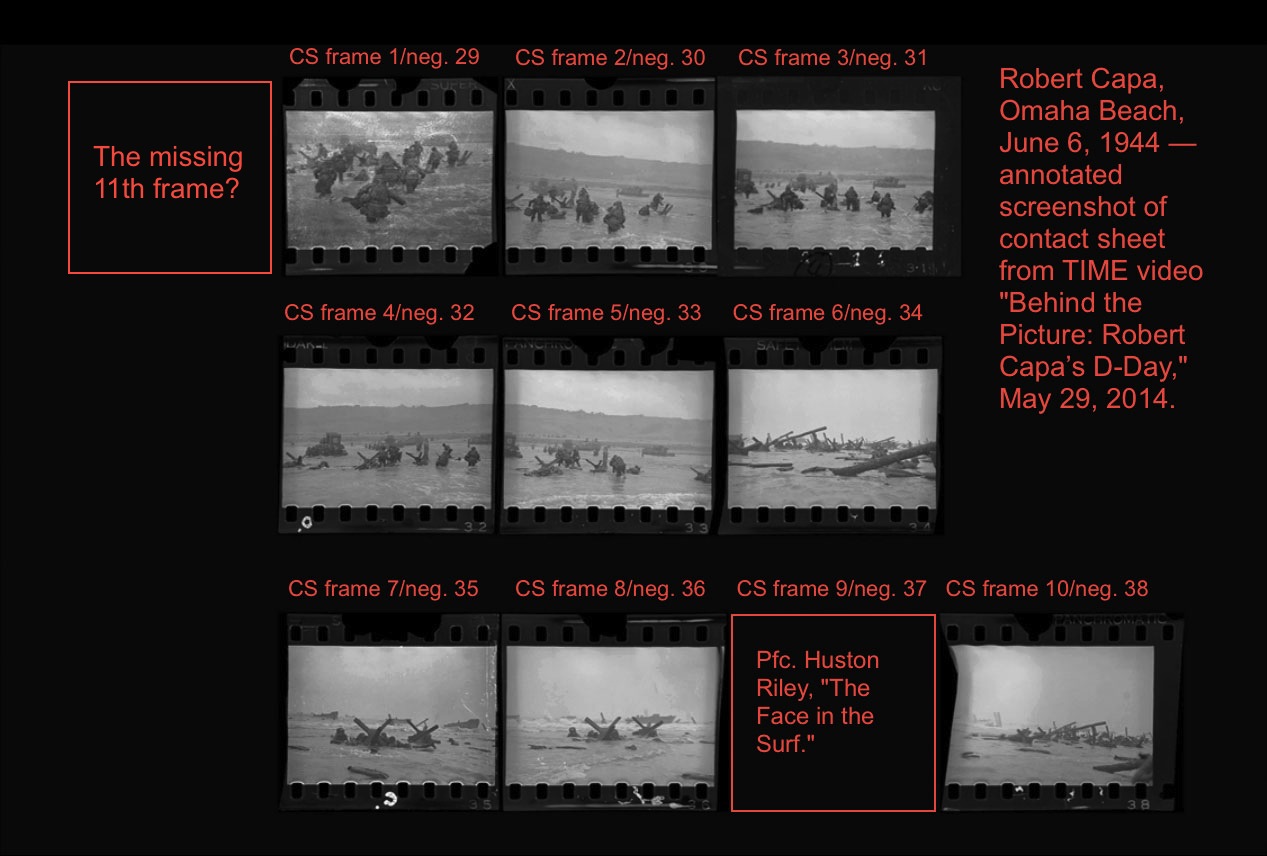
Robert Capa, D-Day images from Omaha Beach, contact sheet, screenshot from TIME video (May 29, 2014), annotated.
•
(Click here for Part 2. For an index of links to all posts in this series, click here.)
(To see all of Capa’s D-Day images at the Magnum website, click here.)
•
In 1978, at the age of 23, photojournalist J. Ross Baughman became the youngest professional ever awarded the Pulitzer Prize, and was cited for his coverage of the guerrilla war in southern Africa. While continuing to work that same year as the first contract photojournalist ever hired by the Associated Press, he competed against himself with two other nominations: For infiltrating the American Nazi movement over nine months to uncover their assassination and bombing plans and once more for being the first journalist to ever accompany Palestinian commandos operating behind Israeli lines.
Baughman soon went on to become an international lecturer on journalism ethics, a university professor and founder of the photo agency Visions, which specialized in long-term, high-risk, difficult-access investigative photo essays around the world. Besides covering wars in 11 countries, his work has appeared everywhere from LIFE to Vanity Fair, Newsweek, Time, Stern, The New York Times Magazine and Vogue.
Some of his writings and photographs may be seen at Wikipedia and at his own website. For his previous Guest Post, click here. To contact J. Ross Baughman, click here.


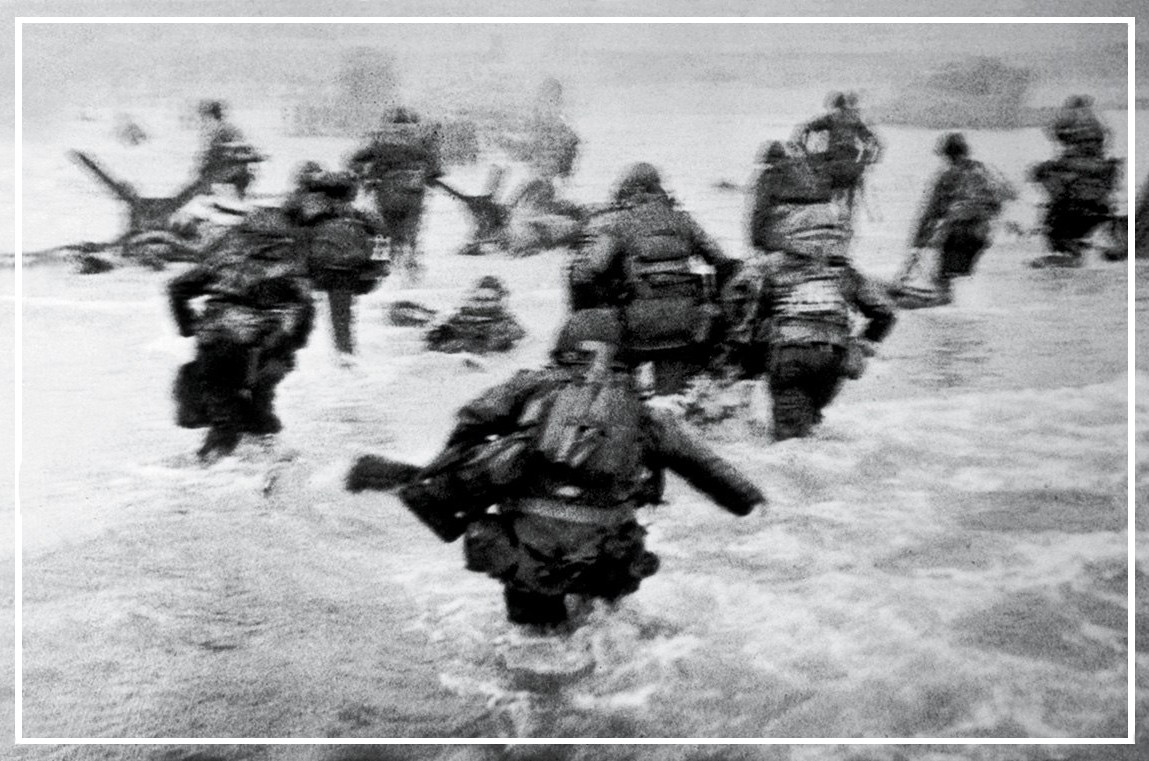
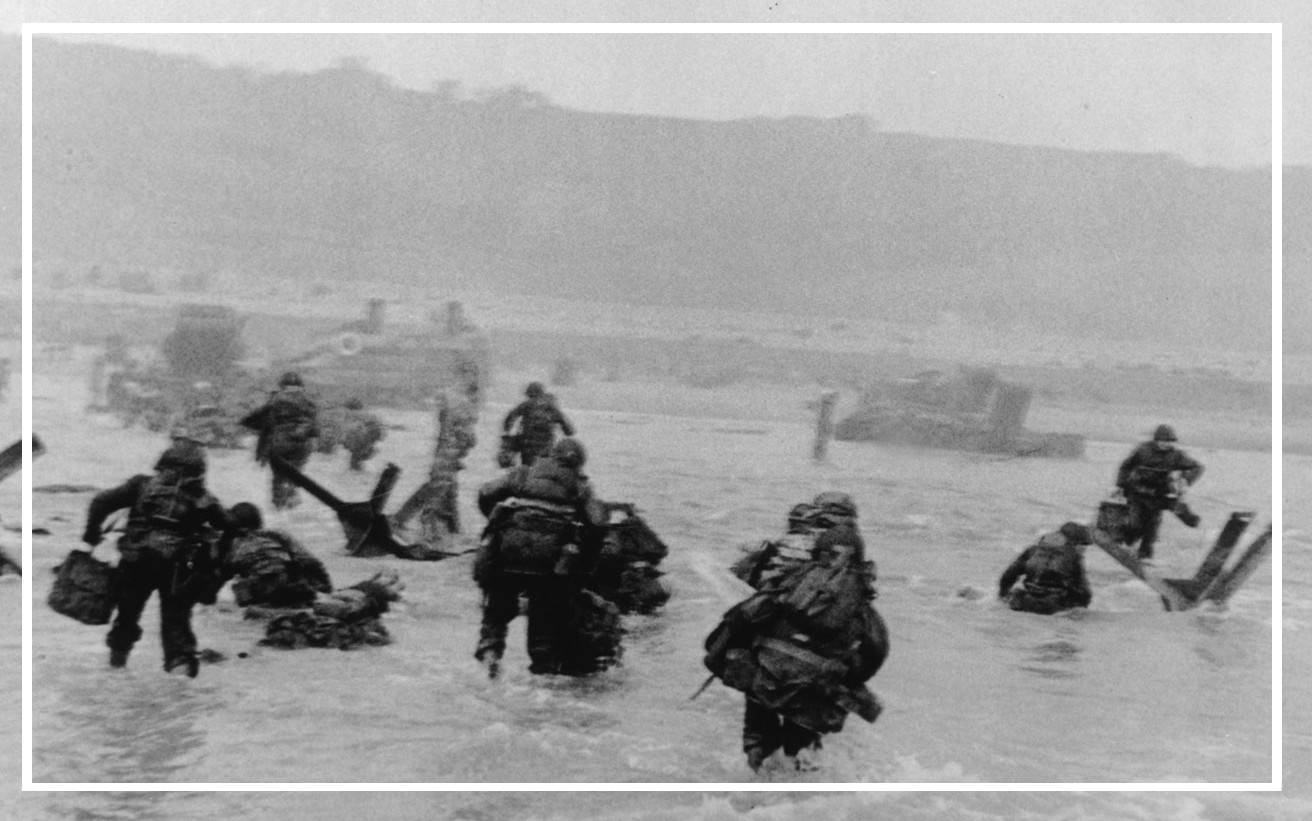
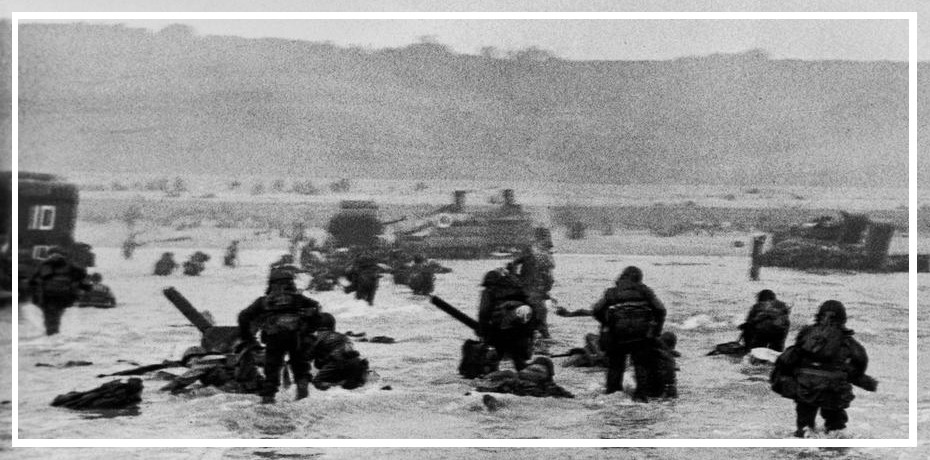
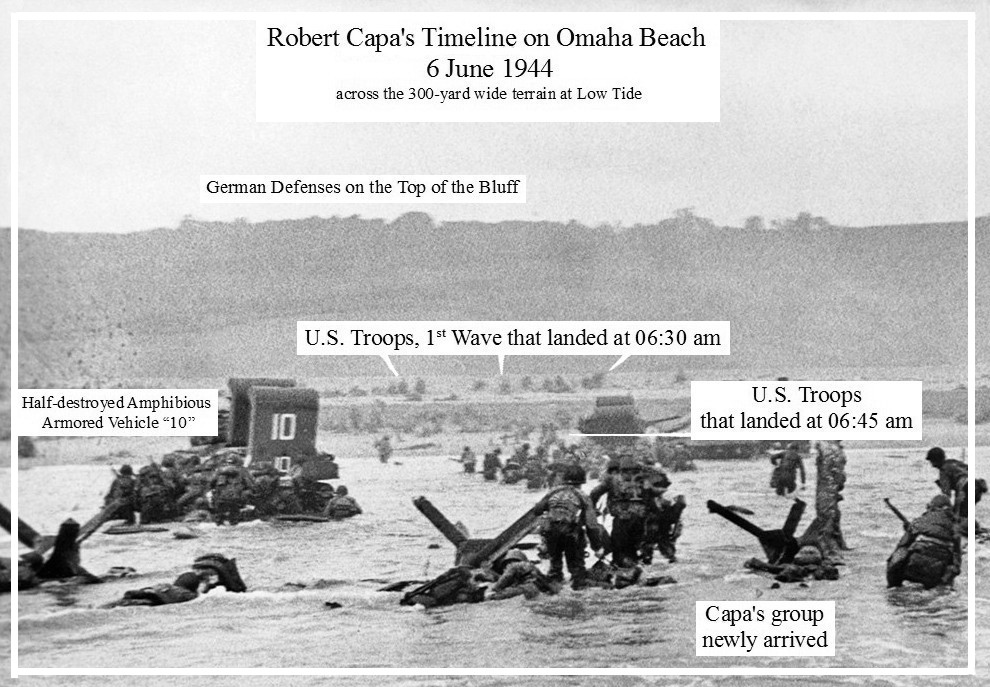
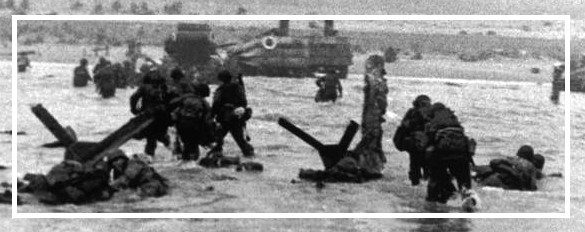
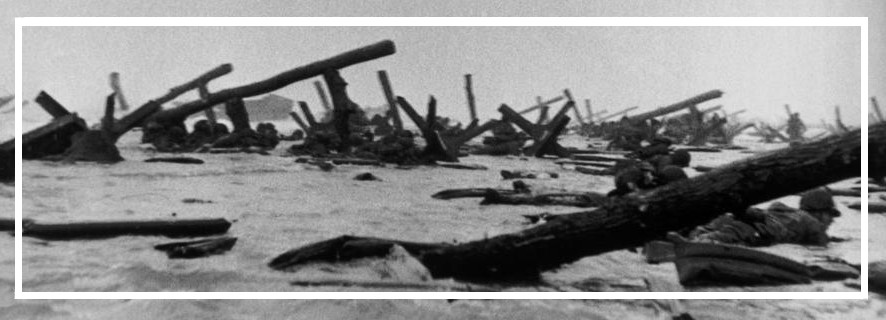





Sir,
Here are a couple of points from a paper I wrote a decade ago addressing many of the Capa ‘problems’. Unfortunately I can’t locate that file, but hope the following will add a bit of context and clarity. If I can find the original file, I’ll pass it along, should you be interested.
Capa claimed to have landed in the first wave with E/16 Inf on beach Easy Red. At this point, no one takes the ‘first wave’ claim seriously. Curiously, though, no one seems to have questioned the other two points, that he landed with Co. E or that he landed on Easy Red. Both assertions deserve examination.
Capa’s claim to have landed in the first wave with Co. E is just as wrong as Ambrose’s claim that he landed in the second wave with Co. E. Both have a grain of truth; both are essentially wrong. The company’s combat power was organized into six ‘boat sections’ of 32 men (each in their own LCVP), and these all landed in the first group of four assault waves (which landed between H-5 and H+3 minutes). Since Capa clearly came in much later than this time window, we know he could not have landed with the assault echelon of Co. E. Period.
Secondly, of those six boat sections, none landed in their assigned sector of Easy Red (the western half of Easy Red), and the single boat section that did land anywhere on Easy Red did so 1000 yards east of its intended target. The other 5 boat sections landed 2000 yards east of their target, hitting Fox Green instead. The lone boat section that did hit Easy Red was Lt. Spalding’s now-famous unit which was arguably the first up the bluffs and largely responsible for the success at the E-1 draw. It is inconceivable that a publicity-addicted man such as Capa would not have bragged he came in on Lt. Spalding’s boat if that had been the case. So it’s clear that not only did he not land with the assault echelon of Co. E, but even if he had, it wasn’t on Easy Red.
It is possible, however, that he could have come in with the rear echelon of Co. E. The company headquarters formed a seventh boat section, and was scheduled in one of the follow-on waves, which began landing at H+30 minutes. This timeline would better fit the conditions on the beach as depicted in Capa’s own pictures.
The best description of Capa’s participation would be that he accompanied the follow-on echelon of Co. E. Not quite as sexy when selling books, movies or legends, so obviously it was ‘exaggerated’ to sound more heroic. Based on Capa’s description of members of the regimental staff (which was scheduled to land in two waves at H+60 and H+70) being ahead of him on the beach, it seems Capa landed between 0735 and 0745 at the earliest.
The problem is that no one can say for certain where this follow-on section landed. Even if it had landed on Easy Red, it raises another problem. The ‘soldier in the surf’ is believed to have been from Co. F, 16th Inf, but five of the six boat sections of that company came in on Fox Green with only one section coming in on the boundary with Easy Red – nowhere near the supposed beaching site of LCI(L)-94 to which Capa fled. Besides, these Co. F sections arrived an hour earlier than Capa, whereas the soldier in the surf supposedly had just landed. So it is extremely unlikely PFC Riley was the soldier in the surf. It was simply the wrong unit at the wrong location.
Clearly, much of the mythology surrounding Capa’s stint on the beach is founded on a mistaken belief that the landings proceeded much as planned. In reality, the actual pattern of mis-landings and missed scheduling destroys the assumptions upon which Capa’s myths are based.
So we know that Capa did not come in with the assault elements of Co. E, and his follow-on echelon landing time probably was even later than suspected. His landing site at Easy Red is also in doubt, as his photos clearly show troops sheltering from fire coming from the right (west), whereas all witness narratives uniformly state the fire against landings on eastern Easy Red came from the strongpoint at the E-3 draw – to the left (east).
The more one delves into the Capa story, the more loose ends turn up.
Regards,
Chuck Herrick
Thanks for this. You add some useful information to the emerging narrative. Your analysis reinforces my projection of Capa’s timeline on the beach. Based on the available documents from military sources (including two eyewitnesses to Capa’s escape to the LCVP), and factoring in the images themselves and Baughman’s reading of them, the evidence indicates that Capa arrived at Omaha Beach no earlier than 07:20 and boarded the LCVP no later than 07:50.
Definitely interested in seeing your paper, if you can dig it out. For what purpose did you write it?